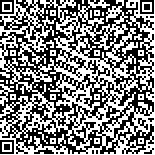| This article has been:Browse 1210Times Download 1176Times |

scan it! |
|
|
| DOI:10.13522/j.cnki.ggps.2019212 |
|
| The characteristics of soil CO2 emission and its impact factors of greenhouse potato soil under different controlled irrigation low limits |
|
HAN Changdong, YE Xuhong, MA Ling, MA Jianhui, ZOU Hongtao*, ZHANG Yulong
|
|
College of Land and Environment, Shenyang Agricultural University/Key Laboratory of Arable Land Conservation (Northeast China), Ministry of Agriculture/National Engineering Laboratory for
Efficient Utilization of Soil and Fertilizer Resources, Shenyang 110866, China
|
| Abstract: |
| 【Objective】In order to provide theoretical basis for regulating soil moisture and CO2 emission, the dynamic changes of soil CO2 emission and its impact factors of greenhouse soil under different controlled irrigation lower limits were investigated.【Method】During the growth period of tomato, adopting LI-8100A automatic determination of soil carbon flux, soil CO2 emission rate and environment factors under 3 controlled irrigation lower limits (D20, D30, D40) were observed.【Result】Soil CO2 emission rates under different controlled irrigation low limits were found to have similar variability during the growth period of tomato. The meansoil CO2 emission rate in the D20 treatment (2.759 μmol/(m2·s)) was the highest, followed by D30 treatment (2.601 μmol/(m2·s)) and the lowest was D40 treatment (2.559 μmol/(m2·s)). The total amount of soil CO2 emission in the D20 treatment was significantly higher than the other two treatments, while D30 and D40 treatments had no significant difference. The relationship between soil CO2 emission and soil temperature at 15cm depth under different controlled irrigation lower limits was explained by exponential functions (P<0.05). The relationship between soil CO2 emission and soil water content at 15 cm depth (P<0.05) under different controlled irrigation lower limits was explained by quadratic curve functions. Compared with the single-factor model, the changes of soil CO2 emission were better explained by the two-factor model of soil temperature and soil water content (P<0.01, R2=0.685~0.838). The temperature sensitivity coefficient (Q10) of soil CO2 emission was 1.442~1.498. The most temperature sensitive treatment was the D20 treatment, while the least sensitive one was the D40 treatment. According to the study by the method of correlation analysis, the relationship between the total amount of soil CO2 emission and soil organic matter, pH, total nitrogen, available P, available K, available N, microbial biomass carbon was significantly correlated. The cumulative contribution rate of the two principal components extracted by PCA analysis was 85.79%.【Conclusion】The CO2 emission of greenhouse soil is affected by the controlled irrigation lower limit , and the CO2 emission of greenhouse soil is promoted by the D20 treatment . |
| Key words: controlled irrigation low limits; soil CO2 emission; soil temperature; soil water content; the temperature sensitivity coefficient (Q10) |
|
|